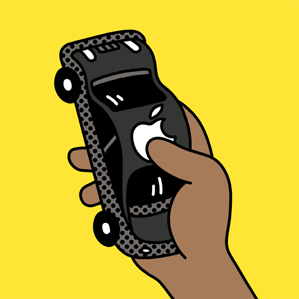How Might Apple Manufacture a Car?
Automobile production might seem a stretch for a company more accustomed to making handheld electronic gadgets and software.

While Apple has yet to make any official announcement, or even to comment on the speculation, mounting evidence suggests the company is at least exploring the development of automotive technology.
But how would an Apple car be manufactured? Industry experts say the company could produce vehicles in much the same way that it makes iPhones and watches: by outsourcing the production of components and contracting with existing manufacturers. What’s more, as cars become more electrified and computerized, Apple’s existing expertise in software, user interfaces, and batteries may become an increasingly valuable asset.
Apple has hired robotics engineers with expertise in the sensing and control capabilities needed for self-driving vehicles. One industry source recently told MIT Technology Review he met with engineers at an Apple-owned subsidiary to discuss automated driving technology. And according to sources quoted recently in the Wall Street Journal,the Apple car could become a commercialized product by 2019. Apple and some automotive suppliers contacted declined to comment for this article.
“It seems hugely aggressive, but not necessarily impossible,” says David Keith, a professor at MIT’s Sloan School of Management who studies the way new technologies proliferate through the automotive industry.
Keith adds that the car industry has seen a glut of production capacity, meaning Apple could quite easily take over an existing factory somewhere. And he suggests that producing an electric vehicle would be simpler because batteries and electric motors are already fairly commoditized. “If you aren’t building an engine, it is really putting all the parts together and painting it,” he says.
Others agree that Apple could most certainly manufacture a car but say it may prove difficult to do so efficiently and cost-effectively.
“I’ve always thought that making cars was a little tougher than most realize,” says Jay Baron, CEO of the Center for Automotive Research (CAR), a nonprofit organization based in Ann Arbor, Michigan. “Anyone can make a car, but try making one every few minutes that people want to buy, and that allows you a profit without significant government support. There’s the challenge.”

Even though most carmakers currently operate their own factories, a few vehicles are produced through contract manufacturing. For example, a major Canadian auto supplier called Magna produces the G-Class on behalf of Mercedes and the Mini for BMW. Google has made prototype driverless cars using components from several suppliers, with contract manufacturing performed by an automotive company called Roush.
Joseph Lull, a project manager at Denso, another large major supplier of car components and technology, pointed out that upstart carmakers such as Tesla, Detroit Electric Cars, and Phoenix outsourced their first models. “You could potentially pull together enough suppliers to do it,” he says. “The biggest challenge would be the logistics.”
In this regard it may be relevant that Apple’s CEO, Tim Cook, has built up a reputation for being able to understand and manage complex electronics supply chains. Lull, asked if his company is currently working with any major consumer electronics firms, said: “None that I can talk about.”
All the experts contacted by MIT Technology Review agreed that the big opportunity for Apple lies in creating the software that will shape drivers’ future experience behind the wheel. Cars are already heavily computerized, but their computer systems are now becoming more connected, both internally and wirelessly to the Internet. And software companies are arguably well placed to develop technology such as automated driving.
Already a car’s interface is becoming an important distinguishing factor, and both Google and Apple are also making a foray into automobiles through software that puts the capabilities of a smartphone in the dashboard of a vehicle (see “Rebooting the Automobile”). This raises the prospect that existing carmakers could become more akin to hardware suppliers in the PC and smartphone world.
“Many existing automakers are very worried about Silicon Valley doing exactly this to them,” says MIT’s Keith. “They worry that Uber or Google or Apple will have the relationship with the customer and provide the value-added services, while the traditional automakers just become part of the supply chain.”
An existing car company, then, might be interested in partnering with Apple rather than be overtaken. Some experts say such a partnership would also help Apple produce high-quality vehicle hardware to go with its software.
Bert Bras, a professor in the mechanical engineering school at Georgia Tech, says it would also cost many billions for Apple to go into manufacturing for itself. “Apple has lots of money,” he says. “But rather than starting from scratch, I suspect they would partner with a foreign, perhaps Chinese, automaker.”
However, Bras warns that the complexity of the challenge should not be underestimated. “Just take a look at Volkswagen,” he says. “They could not get their own diesel engine to work like they wanted, and they are experts in engines and cars.”
Keep Reading
Most Popular
How scientists traced a mysterious covid case back to six toilets
When wastewater surveillance turns into a hunt for a single infected individual, the ethics get tricky.
The problem with plug-in hybrids? Their drivers.
Plug-in hybrids are often sold as a transition to EVs, but new data from Europe shows we’re still underestimating the emissions they produce.
Sam Altman says helpful agents are poised to become AI’s killer function
Open AI’s CEO says we won’t need new hardware or lots more training data to get there.
Stay connected
Get the latest updates from
MIT Technology Review
Discover special offers, top stories, upcoming events, and more.